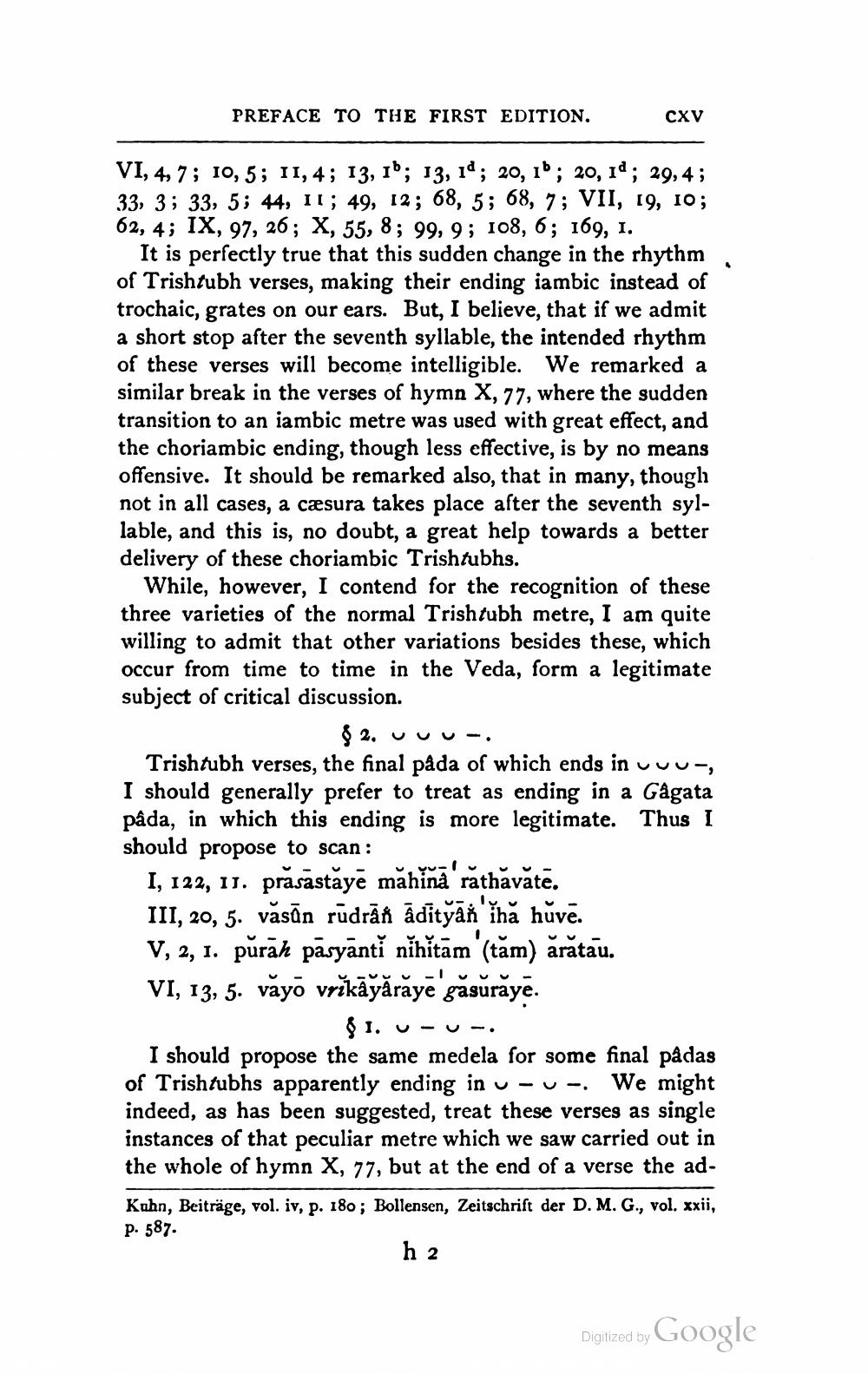________________
PREFACE TO THE FIRST EDITION.
CXV
cxv
VI, 4, 7; 10, 5; 11,4; 13, 15; 13, 14, 20,11; 20,11; 29,4; 33, 3; 33, 5; 44, 11; 49, 12; 68, 5; 68, 7; VII, 19, 10; 62, 4; IX, 97, 26; X, 55, 8; 99, 9; 108, 6; 169, 1.
It is perfectly true that this sudden change in the rhythm of Trishtubh verses, making their ending iambic instead of trochaic, grates on our ears. But, I believe, that if we admit a short stop after the seventh syllable, the intended rhythm of these verses will become intelligible. We remarked a similar break in the verses of hymn X, 77, where the sudden transition to an iambic metre was used with great effect, and the choriambic ending, though less effective, is by no means offensive. It should be remarked also, that in many, though not in all cases, a cæsura takes place after the seventh syllable, and this is, no doubt, a great help towards a better delivery of these choriambic Trishtubhs.
While, however, I contend for the recognition of these three varieties of the normal Trishtubh metre, I am quite willing to admit that other variations besides these, which occur from time to time in the Veda, form a legitimate subject of critical discussion.
$ 2. uuuTrishtubh verses, the final påda of which ends in vuu-, I should generally prefer to treat as ending in a Gågata pâda, in which this ending is more legitimate. Thus I should propose to scan:
I, 122, 11. prăsāstăye mahinā rathăvate. III, 20, 5. văsân rūdrāt ādītýāå ihă hủve. V, 2, . pural paryanti nihitom (tam) Aratau. VI, 13, 5. vãyo vrikāýărăye găsurăye.
$1. u-uI should propose the same medela for some final padas of Trishtubhs apparently ending in u-u-. We might indeed, as has been suggested, treat these verses as single instances of that peculiar metre which we saw carried out in the whole of hymn X, 77, but at the end of a verse the adKuhn, Beiträge, vol. iv, p. 180; Bollensen, Zeitschrift der D. M. G., vol. xxii, P. 587.
h 2
Digitized by Google




